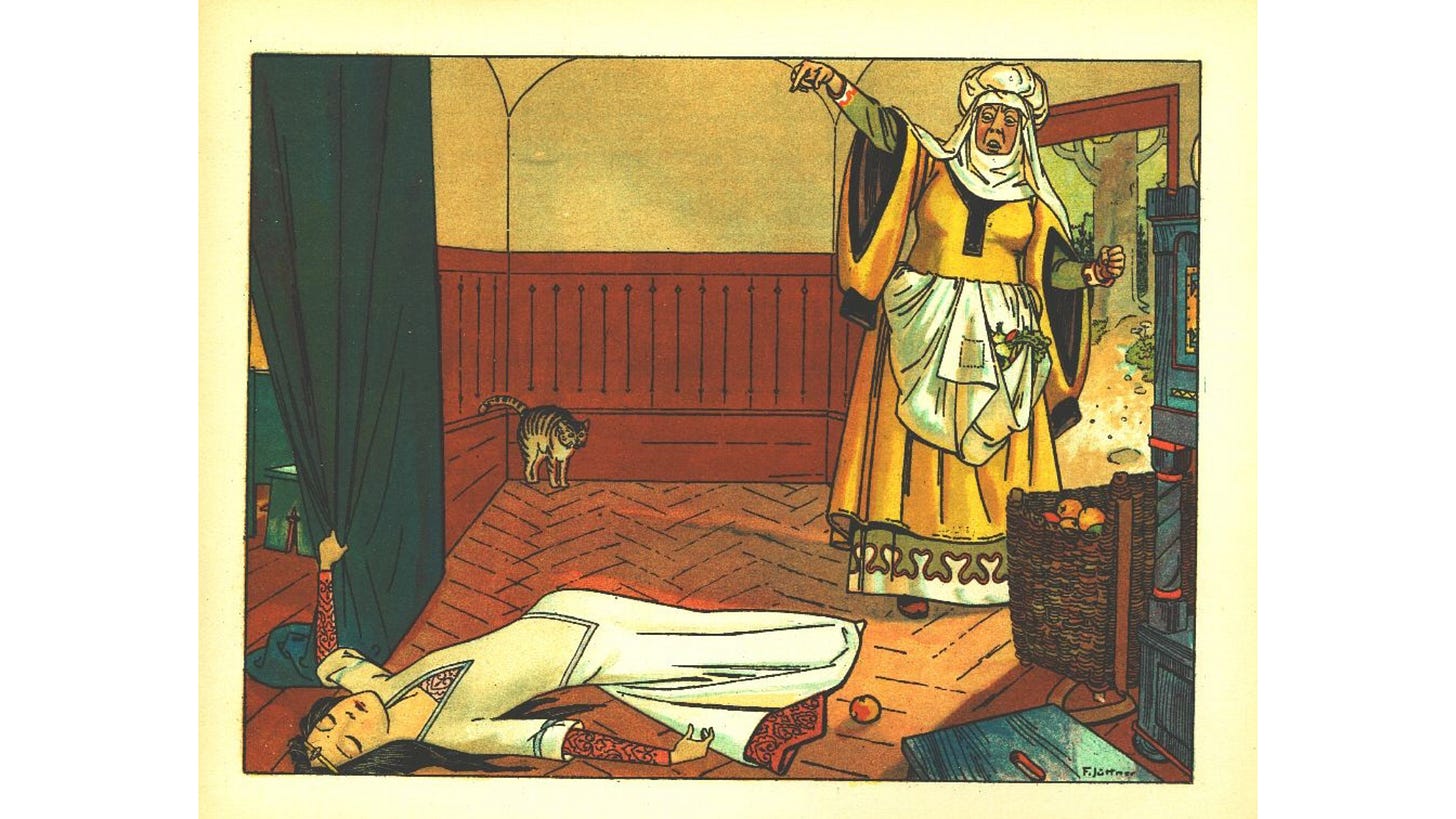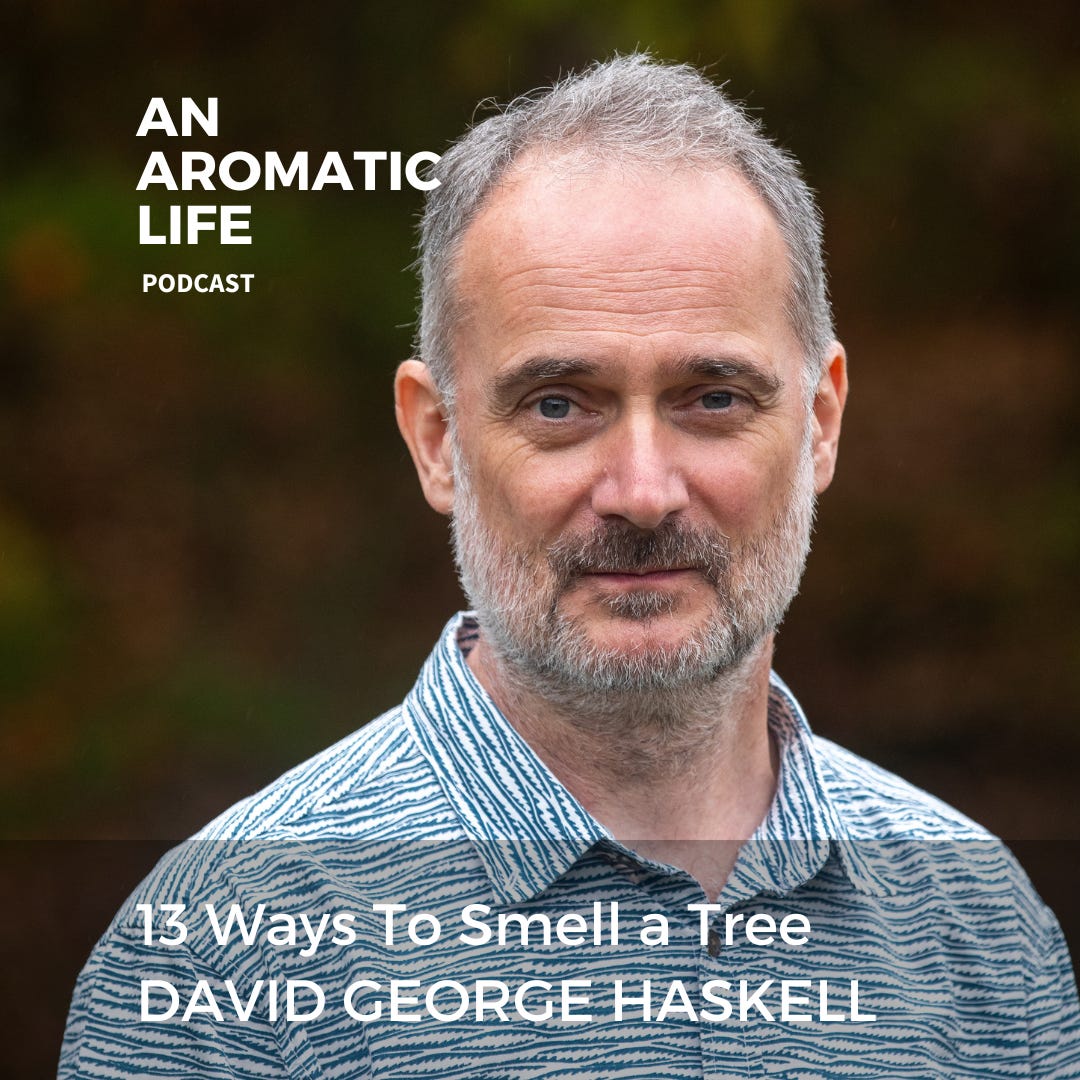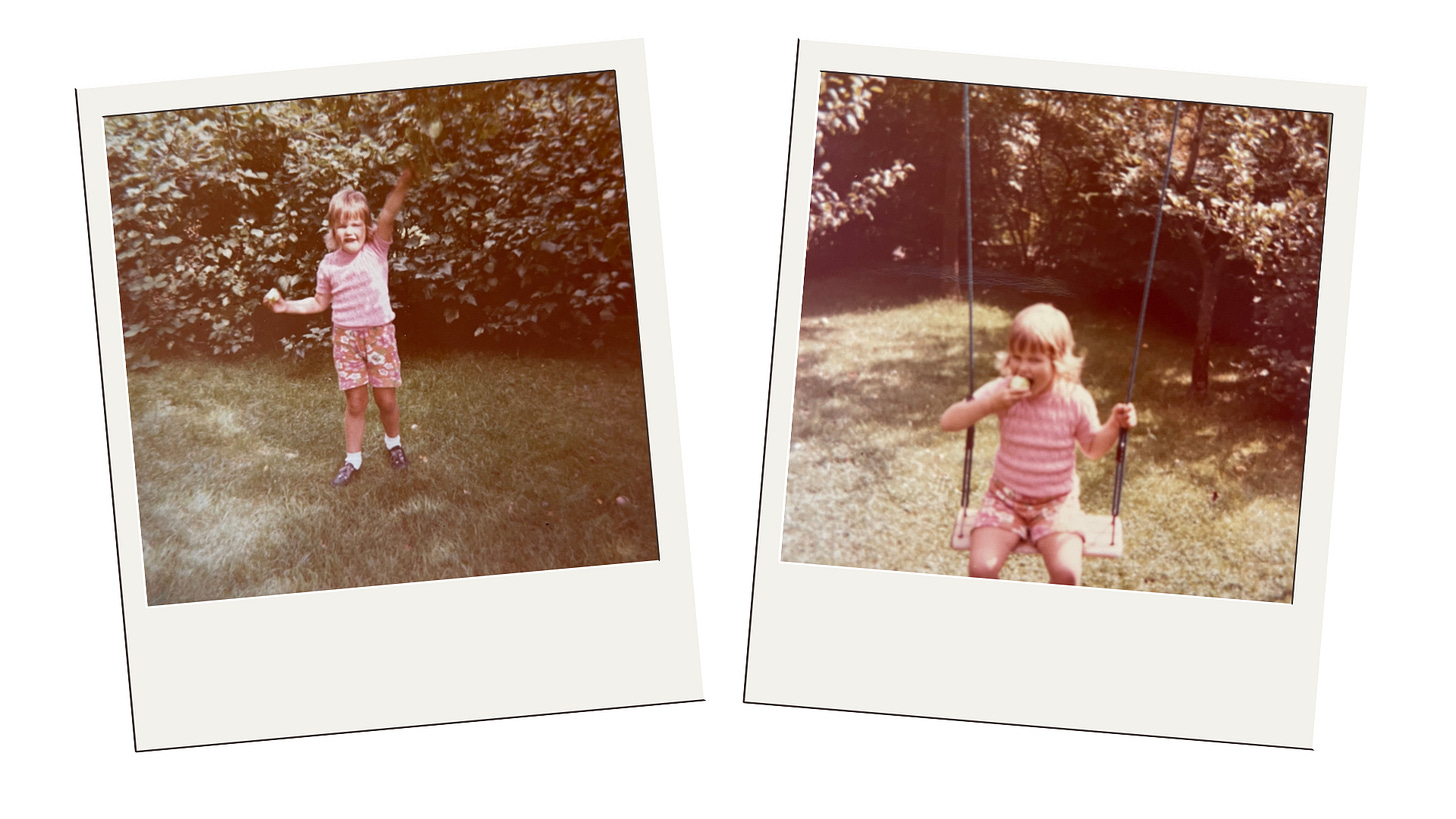Practices in Smelling: Cultural Heritage
Celebrating the tree that's important to your identity.

In the 1854 Brothers Grimm fairy tale “Snow White” (Schneewittchen), the queen disguises herself as a farmer's wife and offers Snow White an apple that is secretly poisoned. Snow White is hesitant to accept it, so the queen cuts the apple in half, eating the white (harmless) half and giving the red poisoned half to Snow White; the girl eagerly takes a bite and then falls into a coma, causing the Queen to think she has finally triumphed. Oh, the horror!
Apples (and their trees) have long played an important role in (my) German culture, as I recently discovered while going down a few proverbial rabbit holes. Not only have they been prominent in literature (as above), and in traditions (many plant an apple tree at the birth of a child), but also more broadly as fixtures in German agriculture; apple trees make up 67% of total deciduous fruit trees planted in the country, as per the 2022 German Fruit Tree Census.
Of all European countries, Germany consumes the most apples and that’s heavily reflected in the traditional cuisines that I grew up with: apple strudel (Apfelstrudel), baked apples (Bratäpfel), apple cake (Apfelkuchen), apple pancakes (Apfelpfannkuchen), cider (Apfelwein), applesauce (Apfelmus) and juice (Apfelsaft) to name just a few.
Why do I tell you all of this?
Well, the idea to explore my cultural heritage through a single tree came from a conversation I had recently with a guest on my podcast, award-winning author and biologist David George Haskell. You can listen here, it’s the latest episode.
David wrote this wonderful book called Thirteen Ways To Smell a Tree, and I asked him what he thought was the one tree everyone should smell at least once in their lives. Instead of simply naming a tree, he was more reflective and asked me to find the tree that’s at the center of my own culture - brilliant, right?
So I thought about it for a while and realized it was the apple tree - Malus pumila (most commonly cultivated apple). While I’ve lived in the U.S. for over 50 years now, reflecting back on my early years in Hamburg, Germany I realized that I was surrounded by apple trees and ate foods made of apples all the time.
And those apple-centric food/drink traditions are being passed down to my children now. Their favorite dessert is my Oma’s apple cake, which we delight in all Fall and Winter.
Which is why, in this month’s Practices in Smelling, I want to invite you to to think about what one tree is at the center of your own cultural identity, and encourage you to use your sense of smell to celebrate and bring her into awareness.
The tree could be described in a sacred text (ie. the olive tree), be an integral part of the cuisines you eat (ie. the apple tree), or even embedded in the ecologies of lived environments (ie. the hinoki tree). What is that one tree for you?
Once you’ve identified the tree, here are 3 smelling exercises you can do to acknowledge her value and embody her significance to you…
Keep reading with a 7-day free trial
Subscribe to An Aromatic Life to keep reading this post and get 7 days of free access to the full post archives.



